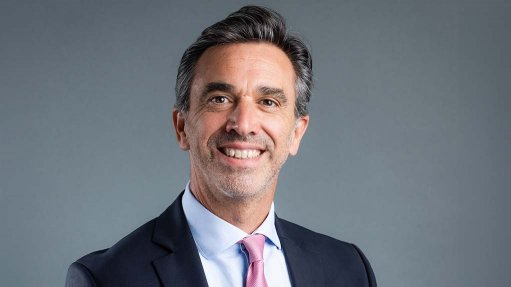Cape Town paying businesses and residents for excess power is a glimpse into SA’s electric future
This article has been supplied as a media statement and is not written by Creamer Media. It may be available only for a limited time on this website.
When the City of Cape Town (CoCT) announced last month that it would begin paying businesses and residents for feeding surplus power into the grid, it offered a glimpse into the future of power provision in South Africa. That’s according to Matthew Cruise, Head of Business Intelligence at Hohm Energy, a leading provider of turnkey solar energy solutions.
According to the provisions of the offer, achieved thanks to an exemption from National Treasury, users feeding back into the grid will be paid R1.04/kWh for the current financial year. This amount includes the 79c/kWh recommended by NERSA and a 25c/kWh incentive tariff added by the CoCT for this pilot. The CoCT has additionally dropped requirements that power sellers be net consumers of electricity and will pay them in cash rather than through credits on their municipal accounts.
“The new provisions have the potential to be a game-changer for reliable electricity supply in Cape Town,” says Cruise. “With business owners able to earn from supplying power to the grid from June and homeowners before the end of the year, rooftop solar power especially becomes viable for a much greater body of people.”
“While a good solar installation, even one that’s funded through a loan or bond extension, will typically pay for itself in five years, that amount of time is dramatically reduced by being able to feed back into the grid,” he adds. “It also means that the same businesses that have been so crippled by load shedding can get their operations back on track while contributing to its eventual eradication.”
The policy adopted by the City of Cape Town is in line with those successfully implemented by a number of countries and regions around the world. California, Germany, Vietnam, and South Australia have all paid business and domestic rooftop solar users to feed back into the grid and have shored up their energy reserves as result. In fact, rooftop solar in Vietnam grew by more than 2000% between 2019 and 2021, accounting for upward of 9GW of the country’s installed capacity. By way of comparison, that’s equivalent to more than 20% of the country’s total running capacity as of December last year.
As Cruise points out, adding anything like that kind of installed capacity to the grid in South Africa could be a game-changer. But in order for that to happen, he adds, other municipalities have to be willing to follow Cape Town’s example. While there may be initial resistance, he believes that economic necessity will eventually make it inevitable.
“For many years, analysts have expressed fears that handing over power generation to businesses and individuals would adversely affect the poor, whose electric consumption has always been subsidised by wealthier consumers,” says Cruise. “But those concerns are effectively meaningless in the face of the expensive diesel turbines that Eskom uses to produce 2000MW to reduce load shedding. With diesel electricity being 10x more expensive than coal, you effectively save Eskom money by removing yourself as a load off the grid. The economic devastation wrought by load shedding outweighs the revenue that is lost for Eskom as well."
“Raising such concerns also ignores the potential job creation and skills development that will inevitably come with widespread solar installations from homes and businesses,” he adds. “If Cape Town sees anything like the success that others around the world have, it could easily provide the model for the future of electricity supply and consumption in South Africa.
Comments
Press Office
Announcements
What's On
Subscribe to improve your user experience...
Option 1 (equivalent of R125 a month):
Receive a weekly copy of Creamer Media's Engineering News & Mining Weekly magazine
(print copy for those in South Africa and e-magazine for those outside of South Africa)
Receive daily email newsletters
Access to full search results
Access archive of magazine back copies
Access to Projects in Progress
Access to ONE Research Report of your choice in PDF format
Option 2 (equivalent of R375 a month):
All benefits from Option 1
PLUS
Access to Creamer Media's Research Channel Africa for ALL Research Reports, in PDF format, on various industrial and mining sectors
including Electricity; Water; Energy Transition; Hydrogen; Roads, Rail and Ports; Coal; Gold; Platinum; Battery Metals; etc.
Already a subscriber?
Forgotten your password?
Receive weekly copy of Creamer Media's Engineering News & Mining Weekly magazine (print copy for those in South Africa and e-magazine for those outside of South Africa)
➕
Recieve daily email newsletters
➕
Access to full search results
➕
Access archive of magazine back copies
➕
Access to Projects in Progress
➕
Access to ONE Research Report of your choice in PDF format
RESEARCH CHANNEL AFRICA
R4500 (equivalent of R375 a month)
SUBSCRIBEAll benefits from Option 1
➕
Access to Creamer Media's Research Channel Africa for ALL Research Reports on various industrial and mining sectors, in PDF format, including on:
Electricity
➕
Water
➕
Energy Transition
➕
Hydrogen
➕
Roads, Rail and Ports
➕
Coal
➕
Gold
➕
Platinum
➕
Battery Metals
➕
etc.
Receive all benefits from Option 1 or Option 2 delivered to numerous people at your company
➕
Multiple User names and Passwords for simultaneous log-ins
➕
Intranet integration access to all in your organisation


















